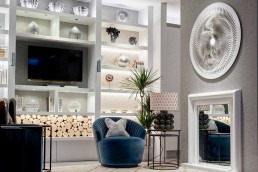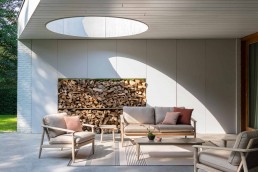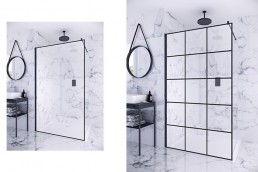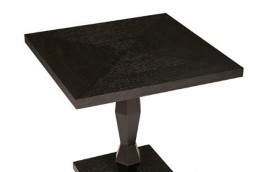David Harber unveils Turbine sculpture
British sculptor David Harber has added his second ever standalone interior piece, Turbine, to his portfolio of sculptures, sundials and water features.
The first Turbine sculpture was initially designed for the renowned art exhibition Galleria Nazionale d’Arte Moderna in Rome and featured painted metal blades mounted to a crisp white board for dramatic effect.
Harber and his design team have reimagined the original to create this particular reincarnation of Turbine, now crafted from marine grade mirror polished stainless steel but in the same elegant formation as its predecessor.
Turbine draws its inspiration from the blades found within gas turbine engines, and are arranged in such a way that light, shadow and reflection shift back and forth depending on the viewing angle, bringing the wall sculpture energetically to life as the viewer passes by.
As with the majority of David Harber pieces, Turbine can be customised and configured in any such way that the client or customer desires.
Turbine is a significant development for the David Harber team and marks the second time a piece has been designed solely for use indoors, making it the perfect option for interior designers and architects to specify for private homes and commercial spaces such as hotels, offices and restaurants.
Harber’s repertoire reflects his love for and fascination of nature, incorporating light, reflection, shadows or water to spectacular effect. Committed to making quality pieces that stand the test of time, Harber works with long-lasting materials such as bronze, copper and steel, transforming them with a variety of techniques into delicate pieces of art.
“During the design process I always enjoy playing with optical illusions; creating sculptures and pieces of art that appear and disappear depending on how you look at them, or stop you in your tracks entirely,” explains Harber. “Turbine encapsulates this perfectly; it may be a still piece, but it brings such energy and movement to it. I have no doubt of its ability to completely transform a room and beguile the observer, wherever it is placed.”
Related Posts
13 November 2020
Vincent Sheppard introduces David collection
2 October 2018
Aqata unveils Matte Black collection
16 December 2016




